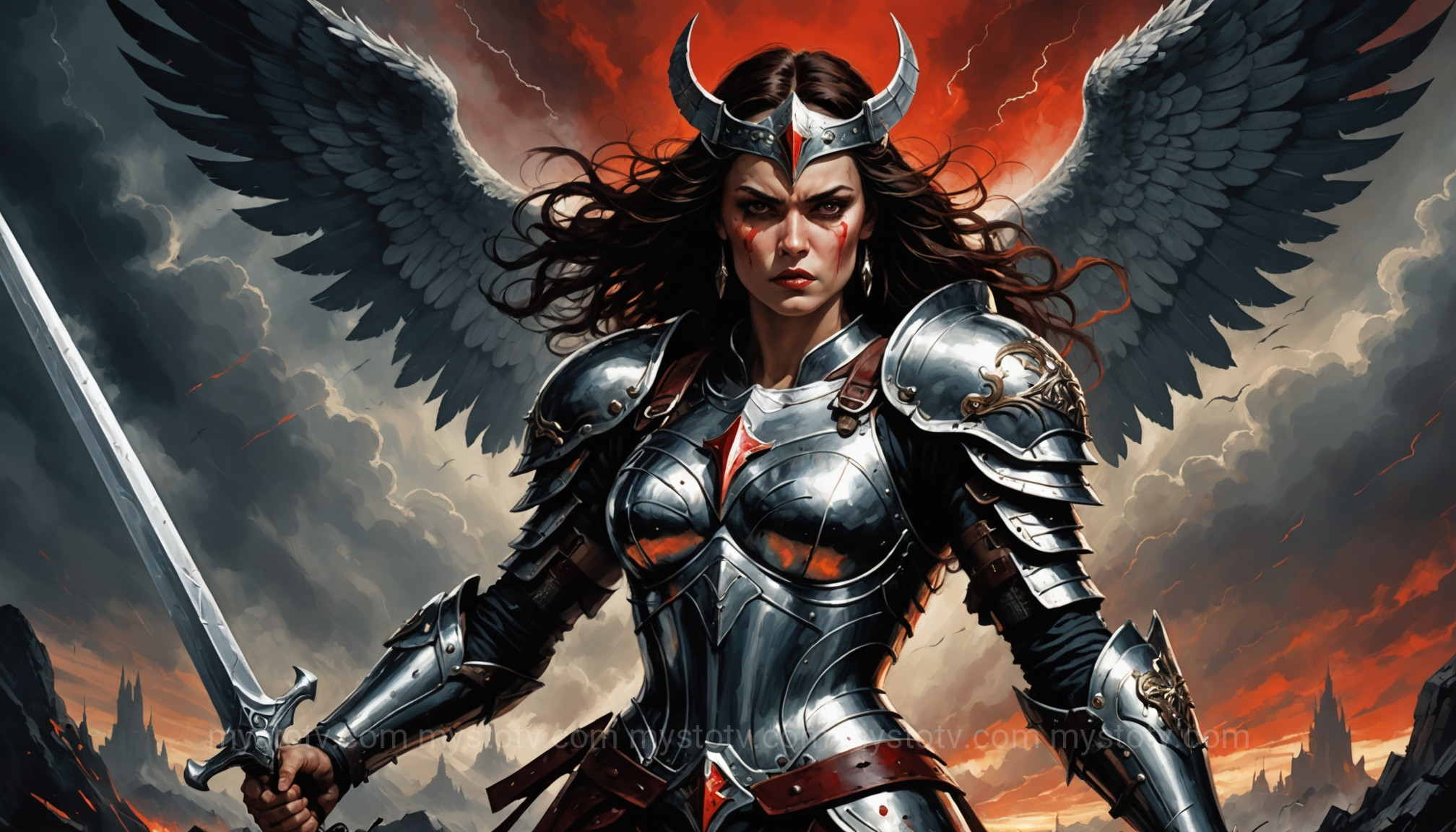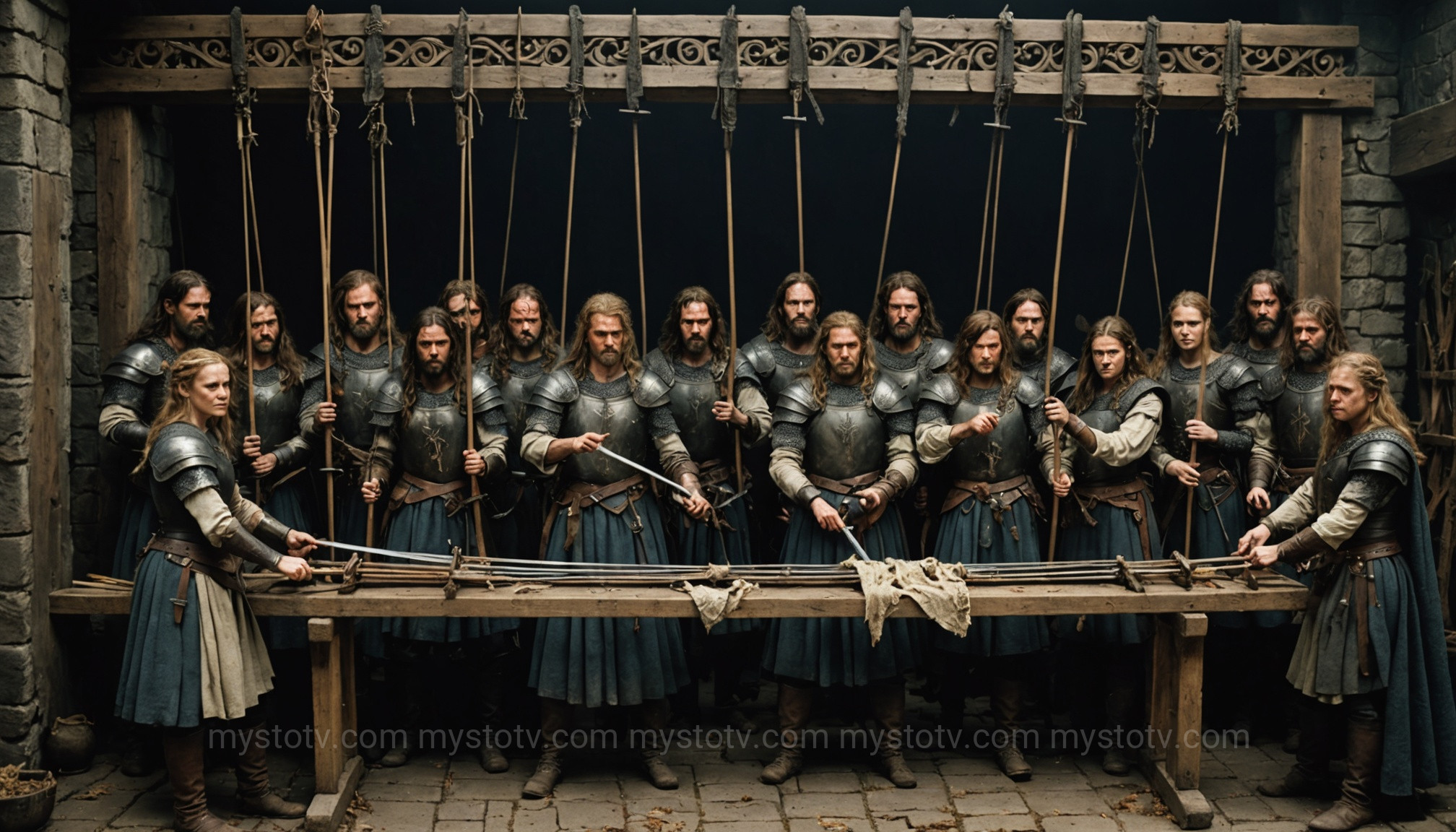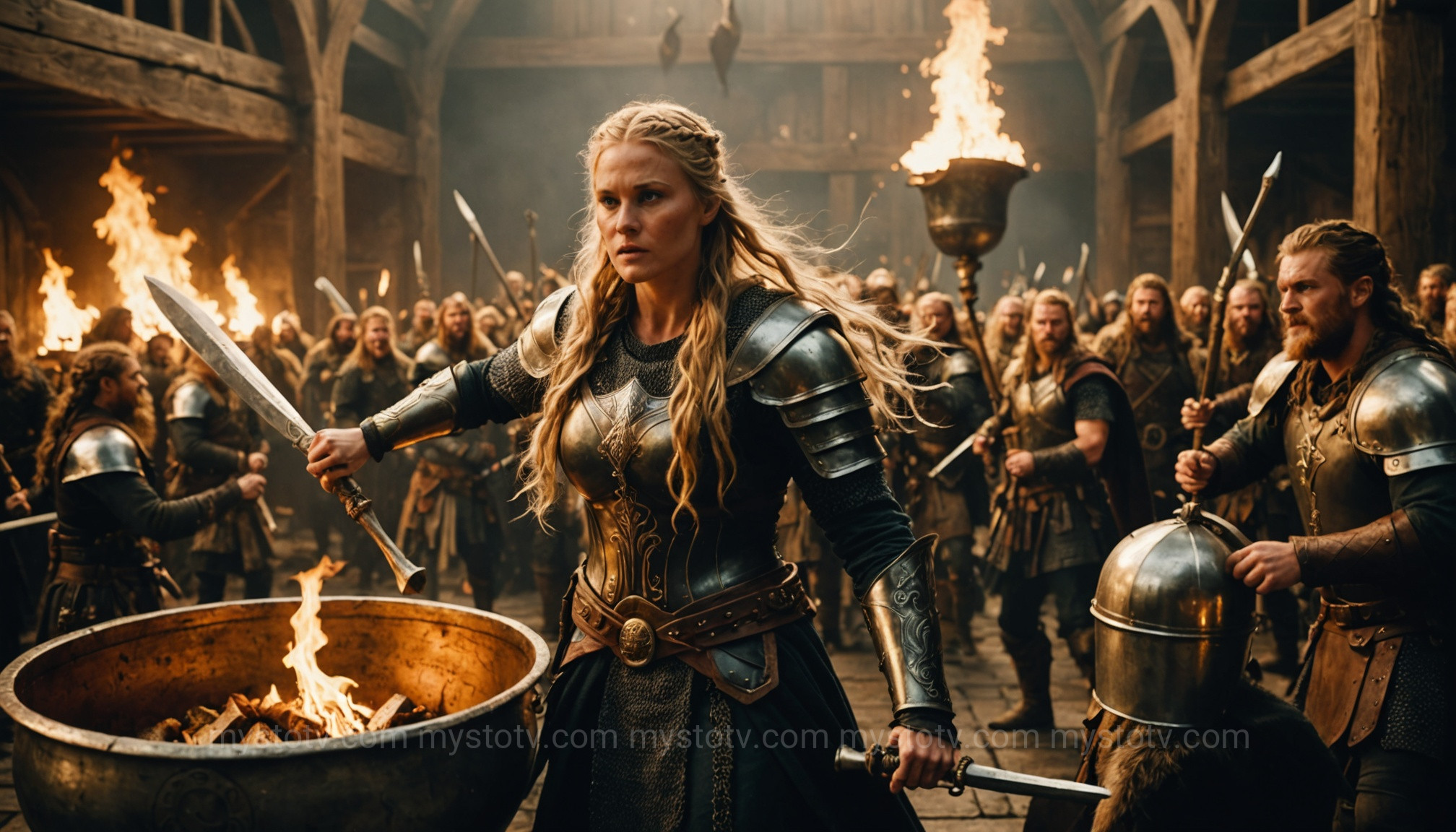I still remember the first time I played the 2018 video game God of War. The boss fights against the Valkyries were notoriously difficult, presenting these figures as corrupted, terrifyingly powerful winged warriors. It was a stark contrast to the heroic, armor-clad women I’d seen in movies like Marvel’s Thor. This disconnect sparked a deep dive into the original sources, the Norse sagas and poems, to understand the authentic myth. It quickly became clear that the pop culture image barely scratches the surface. If you’re asking, **what is a valkyrie in norse mythology**, the answer is far more complex and fascinating than a simple warrior angel. They are figures of fate, death, and divine will, whose true nature is woven from both terrifying darkness and radiant glory.
Contents
- 1 Unveiling the Origins: What is a Valkyrie in Norse Mythology According to the Eddas?
- 2 The Dual Nature of a Valkyrie: What is a Valkyrie in Norse Mythology's Portrayal?
- 3 Beyond the Battlefield: What is a Valkyrie in Norse Mythology's Role in Valhalla?
- 4 The Evolution of the Myth: What is a Valkyrie in Norse Mythology from a Historical Perspective?
- 5 FAQ: Common Questions About Valkyries
- 6 References
- 7 Conclusion: The Enduring Power of the Choosers of the Slain
Unveiling the Origins: What is a Valkyrie in Norse Mythology According to the Eddas?
To truly understand the Valkyries, we must turn to the primary sources of Norse mythology: the Poetic Edda and the Prose Edda. These Old Norse texts provide the most direct, though sometimes contradictory, descriptions of these powerful female spirits. They are not simply background characters; they are integral cogs in the Norse cosmic machine, serving a purpose vital to the gods themselves.
The "Choosers of the Slain": Their Primary Role
The very name "Valkyrie" reveals their core function. It comes from the Old Norse valkyrja, which translates literally to "chooser of the slain." On the battlefields of mortals (Midgard), these supernatural beings would fly over the fray, observing the warriors. Their primary duty, as delegated by the all-father god Odin, was to decide which warriors would die in the conflict. This was not a random act of cruelty but a deliberate selection process. The bravest and most skilled warriors, those who died a glorious death in combat, were chosen by the Valkyries.
This selection determined a warrior's afterlife. Instead of a dreary existence in Hel, the chosen were escorted by the Valkyries to Odin's great hall in Asgard: Valhalla. Here, these fallen heroes were reborn as the Einherjar.
Divine Servants of Odin
The role of the Valkyrie is intrinsically linked to Odin. They are his handmaidens, his agents of will on the battlefield. The collection of the Einherjar was not for sport or simple reward; it was a strategic imperative. Odin was gathering the greatest army of mortal warriors ever assembled in preparation for a final, cataclysmic battle: Ragnarök. The Poetic Edda poem Grímnismál describes how the Einherjar spend their days fighting and feasting, constantly honing their skills for the day they will march out of Valhalla's 540 doors to fight alongside the gods against the giants and monsters.
Analysis: Understanding what a valkyrie in norse mythology is means seeing them as more than just psychopomps (guides of souls). They are divine military recruiters for a war at the end of time. Their choices on the battlefield directly impacted the strength of the gods' forces for the final conflict. This elevates their role from passive observers to active participants in the cosmic destiny of the Nine Realms. Their judgement carried the weight of the world's future.
The Dual Nature of a Valkyrie: What is a Valkyrie in Norse Mythology's Portrayal?

The Norse myths do not present a single, monolithic image of the Valkyrie. Instead, they exist in a fascinating state of duality, portrayed as both terrifying harbingers of doom and beautiful, romantic figures of desire. This paradox is central to understanding their complex character.
The Terrifying Battle-Daemon

In some of the older layers of the mythology, Valkyries are truly fearsome. They are associated with wolves and ravens—beasts of carrion that feast on the dead of battle. The most striking example comes from Darraðarljóð, a poem found in Njáls saga. In this poem, twelve Valkyries are seen before the Battle of Clontarf, weaving the fate of the warriors on a grisly loom. They chant a chilling song, describing their work: "The warp is weighted with men's heads, the weft is woven with men's entrails; our shafts are swords, with which we strike; the reels are arrows and our reed is iron."
Here, they are not just choosing the slain; they are an active, terrifying force of destiny, weaving slaughter itself. They are more akin to demons of war than shining angels.
The Romantic and Noble Shieldmaiden
In stark contrast, the heroic sagas of the late Viking Age often portray Valkyries in a more romanticized light. They become figures of nobility, wisdom, and even love. The most famous example is the Valkyrie Brynhildr from the Völsunga saga. After defying Odin, she is punished by being cast into a magical sleep on a mountaintop, surrounded by a ring of fire. She can only be awakened by a hero brave enough to cross the flames.
The hero Sigurd accomplishes this feat, and he and Brynhildr fall in love. In these stories, the Valkyrie is depicted as a "shieldmaiden," a warrior princess with human emotions, desires, and vulnerabilities. She possesses great knowledge and power but is also subject to love, jealousy, and tragic fate. This portrayal heavily influenced later depictions, including Richard Wagner's opera cycle, Der Ring des Nibelungen.
Analysis: This duality is not a contradiction but a reflection of the Norse worldview. For a Viking Age warrior, battle was the ultimate test, a place of both unimaginable horror and the highest potential for glory. The Valkyrie embodies this paradox perfectly. She is the terrifying specter of death that every warrior fears, but also the beautiful maiden who promises an eternity of honor and reward in Valhalla. To fully answer 'what is a valkyrie in norse mythology', one must embrace this complex and often conflicting imagery.
Beyond the Battlefield: What is a Valkyrie in Norse Mythology's Role in Valhalla?

The Valkyries' duties did not end when they delivered a warrior's soul to Asgard. Within the golden, shield-roofed walls of Valhalla, they took on a different, yet equally important, role. Their function shifted from deciders of fate to providers of the rewards of the glorious afterlife.
Serving the Einherjar
The poem Grímnismál explicitly states that Valkyries like Hrist and Mist would bring Odin his drinking horn. The text implies, and later tradition confirms, that they performed this service for all the Einherjar. After a day spent in mock battle, where wounds would magically heal, the warriors would gather for a great feast. The Valkyries would move through the hall, serving them endless quantities of mead from the udders of the goat Heiðrún.
This role may seem domestic compared to their battlefield duties, but it was a position of high honor. They were the hosts of Odin's hall, providing the comforts and rewards that the Einherjar had earned with their lives. They were an essential part of the warrior's paradise.
Messengers and Agents of Fate
Valkyries also acted as messengers for Odin and were deeply entwined with the concept of fate, or wyrd. Their appearance on a battlefield was not just to choose the slain but was often an omen that a battle was fated to happen and that Odin had taken an interest in its outcome. They were living, breathing manifestations of a warrior's destiny. To see a Valkyrie could be both an honor and a death sentence. Their connection to swan-maidens in some tales, where they could shapeshift using a swan-feather cloak, further adds to their mystical nature, linking them to prophecy and magic.
Analysis: Exploring what a valkyrie in norse mythology does in Valhalla shows the completion of their purpose. They are the arbiters of the entire warrior's cycle: they choose who dies, transport them to the afterlife, and then provide the rewards of that afterlife. This holistic role reinforces the Norse ideal of a 'good death'—one that is not an end, but a transition to a higher, purposeful existence in service to the gods, all facilitated by the Valkyries.
The Evolution of the Myth: What is a Valkyrie in Norse Mythology from a Historical Perspective?
Myths are not static; they change and evolve with the societies that tell them. The figure of the Valkyrie is a prime example of this, transforming over centuries from a primal spirit of slaughter into a noble heroine of epic poetry. Understanding this evolution provides crucial context.
From Ancient Spirits to Noble Figures
Many scholars believe that the earliest conceptions of Valkyries were far more demonic. They were likely pre-Viking Age pagan spirits of carnage, associated with the chaos and bloodshed of war. As Norse society became more structured and aristocratic, particularly in the later Viking Age, the myths were retold and refined. The Valkyries were elevated, humanized, and romanticized. They were given names, lineages (sometimes as daughters of mortal kings), and complex personalities. This shift reflects a cultural move towards valuing individual heroism, nobility, and courtly romance, themes less prevalent in the earlier, more brutal layers of the mythology.
Are Valkyries and Shieldmaidens the Same?
This is a common point of confusion, largely because the myths themselves sometimes blur the lines. In essence, they are different:
- A Valkyrie is a supernatural or semi-divine being, a spirit serving Odin. Her domain is primarily spiritual and mythological.
- A Shieldmaiden (*skjaldmær*) is a mortal human woman who chooses to live the life of a warrior. While their historical prevalence is debated, they feature prominently in sagas like the Hervarar saga.
The confusion arises because figures like Brynhildr are Valkyries who are depicted as warrior princesses, embodying all the traits of a shieldmaiden. It's best to think of a Valkyrie as the mythological archetype and the shieldmaiden as its potential human counterpart. A Valkyrie is always a warrior woman, but a warrior woman is not always a Valkyrie. This duality is key to their portrayal.
Analysis: The historical development of what a valkyrie in norse mythology represents shows how myths adapt to cultural needs. The shift from terrifying battle-daemon to noble warrior-princess mirrors a society grappling with its own identity, gradually overlaying ideals of chivalry and romance onto an older, harsher pagan worldview. The Valkyrie becomes a canvas upon which the evolving values of the Norse people were painted.
FAQ: Common Questions About Valkyries
- 1. Was the goddess Freyja a Valkyrie?
- This is a complex question. Freyja is a powerful goddess of love, beauty, war, and death. According to the Prose Edda, she receives half of those slain in battle in her hall, Fólkvangr, while Odin receives the other half. Because she chooses from the battle-slain, she performs a Valkyrie-like function and is sometimes referred to as the "leader of the Valkyries." However, she is a major goddess in her own right, not merely one of Odin's handmaidens.
- 2. Did Valkyries have wings in Norse mythology?
- No, the image of the winged Valkyrie is a later artistic invention, popularized in the 19th century by painters and Wagner's operas. The original Norse texts describe Valkyries riding incredible horses that could gallop through the sky and over the sea. The power of flight came from their mounts, not from wings on their backs.
- 3. Could a mortal woman become a Valkyrie?
- The myths are ambiguous, but they suggest a fluid boundary. Figures like Brynhildr and the Valkyrie Kára are presented as the daughters of mortal kings who also perform the duties of a Valkyrie. This suggests that certain heroic or royal women could be chosen by the gods or fated to fulfill this divine role, effectively bridging the gap between the mortal and supernatural worlds.
References
- Sturluson, Snorri. The Prose Edda. Translated by Jesse L. Byock, Penguin Classics, 2005.
- Larrington, Carolyne, translator. The Poetic Edda. Oxford University Press, 2014. (Includes key poems such as Völuspá, Grímnismál, and materials related to the Sigurd cycle).
- Cook, Robert, translator. Njals Saga. Penguin Classics, 2001. (Contains the poem Darraðarljóð).
Conclusion: The Enduring Power of the Choosers of the Slain
So, **what is a valkyrie in norse mythology** when all is said and done? They are far more than just the female warriors of pop culture. They are the divine arbiters of a warrior's ultimate fate, the terrifying weavers of destiny, and the honored hosts of the glorious afterlife. They embody the Norse understanding of war's brutal paradox: that the moment of greatest horror could also be the moment of greatest glory. As servants of Odin, they were essential to the preservation of the cosmos, recruiting the army that would stand with the gods at Ragnarök. From fearsome spirits of slaughter to noble shieldmaidens of epic romance, the Valkyrie remains one of the most powerful, complex, and enduring figures from the world of myth—a testament to a culture that saw death not as an end, but as a doorway to one final, glorious battle.